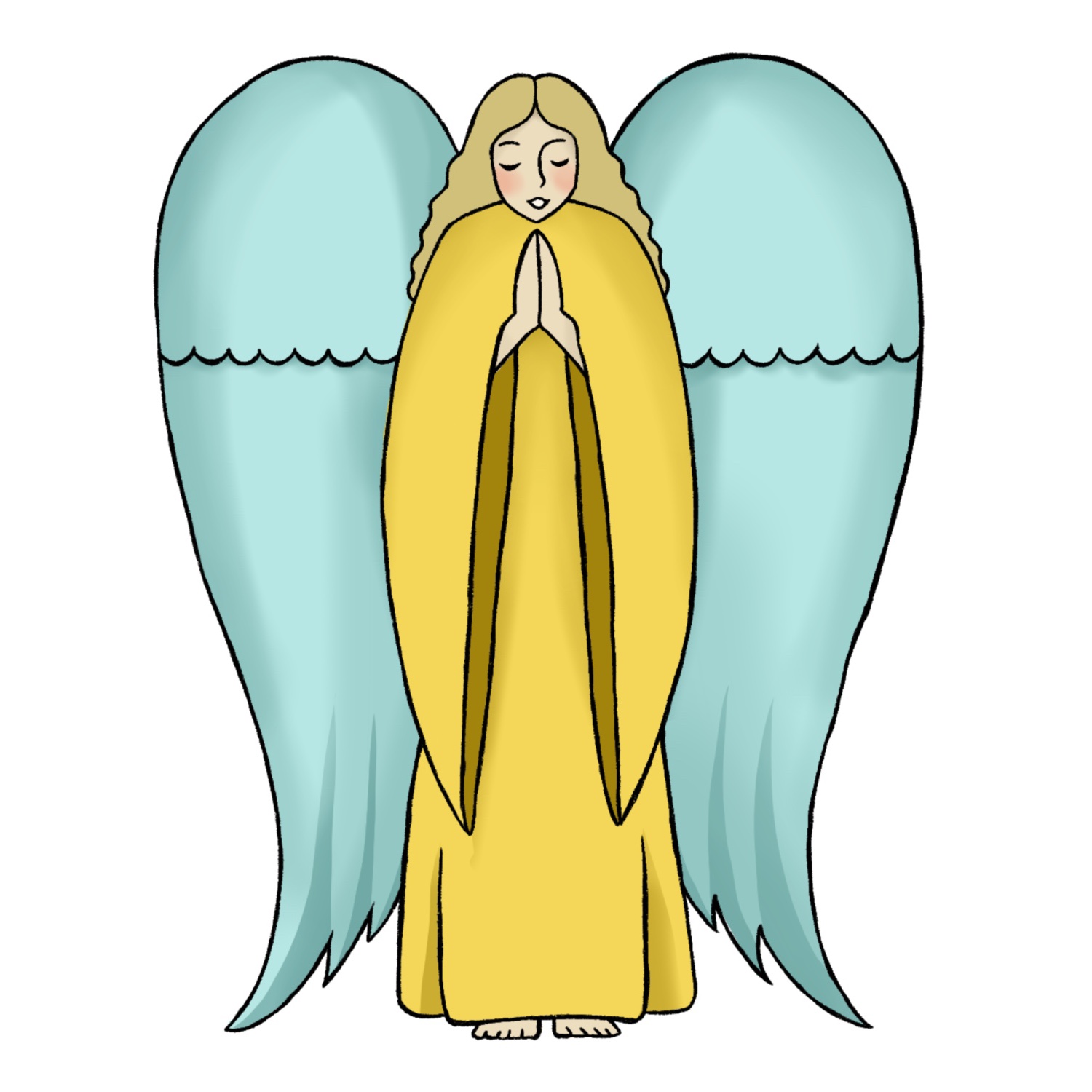Unveiling The Mystical World Of Angels: A Journey Through History, Culture, And Faith
When we talk about angels, the first thing that comes to mind is this ethereal, glowing beings that watch over us. They’re like the ultimate celestial squad, bringing messages from the divine and offering protection in our darkest hours. But there's so much more to angels than just their heavenly glow. Whether you're into spirituality, mythology, or just plain curious about the supernatural, angels have been a source of fascination for centuries. So, buckle up, because we’re diving deep into the world of angels, uncovering their history, significance, and the impact they’ve had on humanity.
From ancient texts to modern pop culture, angels have always had a special place in our hearts and minds. They’re not just characters in religious stories; they’re symbols of hope, guidance, and divine intervention. Whether you believe in them or not, angels have shaped the way we view the universe and our place in it. And hey, who wouldn’t want a guardian angel watching their back?
In this article, we’ll explore everything you need to know about angels. From their origins in ancient cultures to their roles in modern spirituality, we’ll leave no stone unturned. So, grab a cup of coffee, settle into your favorite reading spot, and let’s embark on this angelic adventure together. Trust me, it’s gonna be epic!
Read also:Unveiling The Truth About Andreycam Xxx Ndash What You Need To Know
Table of Contents
- What Are Angels?
- The History of Angels
- Types of Angels
- Angelic Hierarchy
- Angels in Religion
- Angels in Pop Culture
- Guardian Angels: Your Personal Protector
- Symbolism of Angels
- How Angels Communicate with Us
- Real-Life Angelic Experiences
What Are Angels?
Alright, let’s start with the basics. Angels are spiritual beings believed to act as intermediaries between the divine and humanity. Think of them as the celestial messengers who deliver important information, provide guidance, and offer protection. They’re often depicted as radiant figures with wings, but their true form is said to be far more mystical and beyond human comprehension. In many traditions, angels are seen as beings of pure light and energy, existing in a realm that transcends our physical world.
But here’s the kicker: angels aren’t just limited to one religion or culture. They’ve appeared in various forms across different belief systems, from the cherubs of Christianity to the devas of Hinduism. Each tradition has its own take on what angels represent and how they interact with the world. So, whether you’re into angels as spiritual guides or just fascinated by their mythological roots, there’s something for everyone to explore.
Defining Angels Across Cultures
Angels aren’t just a Christian thing, ya know? In fact, they’ve been around in various forms since ancient times. For instance, in Mesopotamian mythology, there were beings called the “Anunnaki,” who were believed to be divine messengers. Similarly, in Greek mythology, Hermes was often seen as a kind of angelic figure, delivering messages from the gods to mortals. And let’s not forget the Islamic tradition, where angels like Jibril (Gabriel) play a crucial role in communicating divine revelations.
So, when we talk about angels, we’re not just talking about one specific idea. It’s a concept that’s been adapted and reimagined across different cultures, each adding its own unique twist. And that’s what makes the study of angels so fascinating. There’s no one-size-fits-all definition; it’s all about how you interpret their role in your life.
The History of Angels
Now, let’s rewind a bit and take a look at the history of angels. Angels have been a part of human storytelling for thousands of years. Their origins can be traced back to ancient civilizations, where they were often depicted as powerful beings with divine authority. In fact, some of the earliest references to angels can be found in the Sumerian and Babylonian texts, where they were seen as celestial entities tasked with maintaining order in the universe.
As civilizations evolved, so did the concept of angels. The Old Testament of the Bible introduces us to figures like Gabriel and Michael, who played pivotal roles in divine narratives. Similarly, in Islamic tradition, angels are mentioned extensively in the Quran, serving as intermediaries between Allah and humanity. Over time, the idea of angels spread across the globe, influencing art, literature, and even modern media.
Read also:Anderson Odotado The Rising Star Whos Making Waves In The World Of Entertainment
Key Historical Moments in Angel Lore
- The Book of Enoch: This ancient Jewish text provides one of the most detailed accounts of angels, including the fallen angels who were cast out of heaven.
- Medieval Art: During the Middle Ages, angels became a popular subject in art, often depicted with wings and halos, reinforcing their celestial nature.
- Renaissance Literature: Writers like Dante and Milton explored the role of angels in their works, adding depth to the existing narratives.
Types of Angels
Not all angels are created equal, at least according to some traditions. There are different types of angels, each with their own unique roles and responsibilities. For example, in Christianity, there are archangels, seraphim, cherubim, and more. Each type of angel serves a specific purpose, from delivering messages to protecting the heavenly throne.
Let’s break it down a bit further. Archangels, like Gabriel and Michael, are often seen as the most powerful and are tasked with important missions. Seraphim, on the other hand, are the closest to God and are responsible for maintaining the divine presence. Cherubim, meanwhile, are known for their protective duties, often guarding sacred spaces.
Breaking Down Angelic Roles
- Archangels: High-ranking angels who deliver important messages and lead celestial armies.
- Seraphim: The closest angels to God, responsible for maintaining divine presence.
- Cherubim: Guardians of sacred spaces, often depicted as winged beings.
Angelic Hierarchy
Just like any organization, the angelic world has its own hierarchy. According to some traditions, angels are divided into different choirs or ranks, each with its own level of authority. This hierarchy is often depicted in religious texts and art, with each rank having its own distinct characteristics.
At the top of the hierarchy are the seraphim, followed by the cherubim, and then the thrones. Below them are the dominions, virtues, powers, principalities, archangels, and angels. Each rank has its own unique role, from governing the universe to protecting individual souls. It’s like a celestial bureaucracy, but way cooler.
Understanding the Angelic Ranks
Here’s a quick rundown of the angelic hierarchy:
- Seraphim: The highest rank, responsible for maintaining divine presence.
- Cherubim: Guardians of sacred spaces.
- Thrones: Represent divine justice and authority.
- Archangels: High-ranking messengers and leaders.
Angels in Religion
Angels play a significant role in many religions, serving as intermediaries between the divine and humanity. In Christianity, angels are seen as messengers of God, delivering important messages and providing guidance. Similarly, in Islam, angels are believed to play a crucial role in communicating divine revelations. Even in non-Abrahamic traditions, like Hinduism and Buddhism, there are beings that serve similar roles to angels.
Religious texts often provide detailed accounts of angelic interactions, from the Annunciation in the Bible to the revelation of the Quran. These stories highlight the importance of angels in spiritual narratives, reinforcing their role as divine messengers and protectors.
Angels in Different Religions
- Christianity: Angels deliver messages, provide protection, and serve as intermediaries between God and humanity.
- Islam: Angels play a crucial role in communicating divine revelations and maintaining order in the universe.
- Hinduism: Devas, or celestial beings, serve similar roles to angels, acting as messengers and protectors.
Angels in Pop Culture
From movies to TV shows to video games, angels have made quite the splash in modern pop culture. They’ve been depicted as everything from romantic leads to action heroes, showcasing their versatility as characters. Shows like "Supernatural" and "Charmed" have explored the concept of angels in depth, while movies like "City of Angels" and "Constantine" have brought them to the big screen.
But it’s not just about entertainment. In many ways, pop culture has helped to shape our understanding of angels, introducing new ideas and interpretations. Whether you’re into angelic romance or supernatural thrillers, there’s something for everyone in the world of angelic media.
Iconic Angelic Characters in Pop Culture
- Cas from Supernatural: A fan-favorite angel with a quirky personality and a soft spot for humanity.
- Michael from Constantine: The archangel Michael, portrayed as a powerful and enigmatic figure.
- Orpheus from Angel: A vampire with a soul, but hey, let’s not forget the angelic vibes!
Guardian Angels: Your Personal Protector
Guardian angels are perhaps the most well-known type of angel, believed to watch over and protect individuals throughout their lives. The idea of having a personal angel watching your back is comforting, to say the least. Many people report feeling the presence of their guardian angel during difficult times, providing guidance and reassurance.
But how do you know if your guardian angel is around? Some say it’s through subtle signs, like feathers appearing out of nowhere or feeling a sudden sense of peace. Others believe that guardian angels communicate through dreams, offering messages and insights. Whatever the case may be, the concept of guardian angels continues to resonate with people across the globe.
Signs of Your Guardian Angel
- Feathers: Finding feathers in unexpected places is often seen as a sign of angelic presence.
- Dreams: Angels may communicate through dreams, offering guidance and insights.
- Sudden Peace: Feeling a sense of calm during stressful situations could be your guardian angel at work.
Symbolism of Angels
Angels are rich in symbolism, representing everything from protection to purity. Their wings are often seen as a symbol of freedom and transcendence, while their halos represent divine light and enlightenment. In art, angels are depicted in a variety of ways, from serene and graceful to powerful and commanding.
But it’s not just about their physical appearance. Angels also represent deeper concepts, like hope, faith, and divine intervention. They serve as a reminder that we’re never truly alone, that there’s always a higher power watching over us. And hey, who wouldn’t want a little divine intervention every now and then?
Common Angelic Symbols
- Wings: Represent freedom, transcendence, and spiritual elevation.
- Halo: Symbolizes divine light and enlightenment.
- Trumpet: Often associated with heralding important messages or events.
How Angels Communicate with Us
So, how exactly do angels communicate with us? Well, it’s not like they’re gonna send you a text or an email (although that would be pretty cool). Instead, they often use subtle signs and symbols to get their message across. This could be through dreams, synchronicities, or even gut feelings.
For example, if you keep seeing the number 111 or 444, that could be your angel trying to get your attention. Or maybe you find a feather in a place where it shouldn’t be. These little signs are


